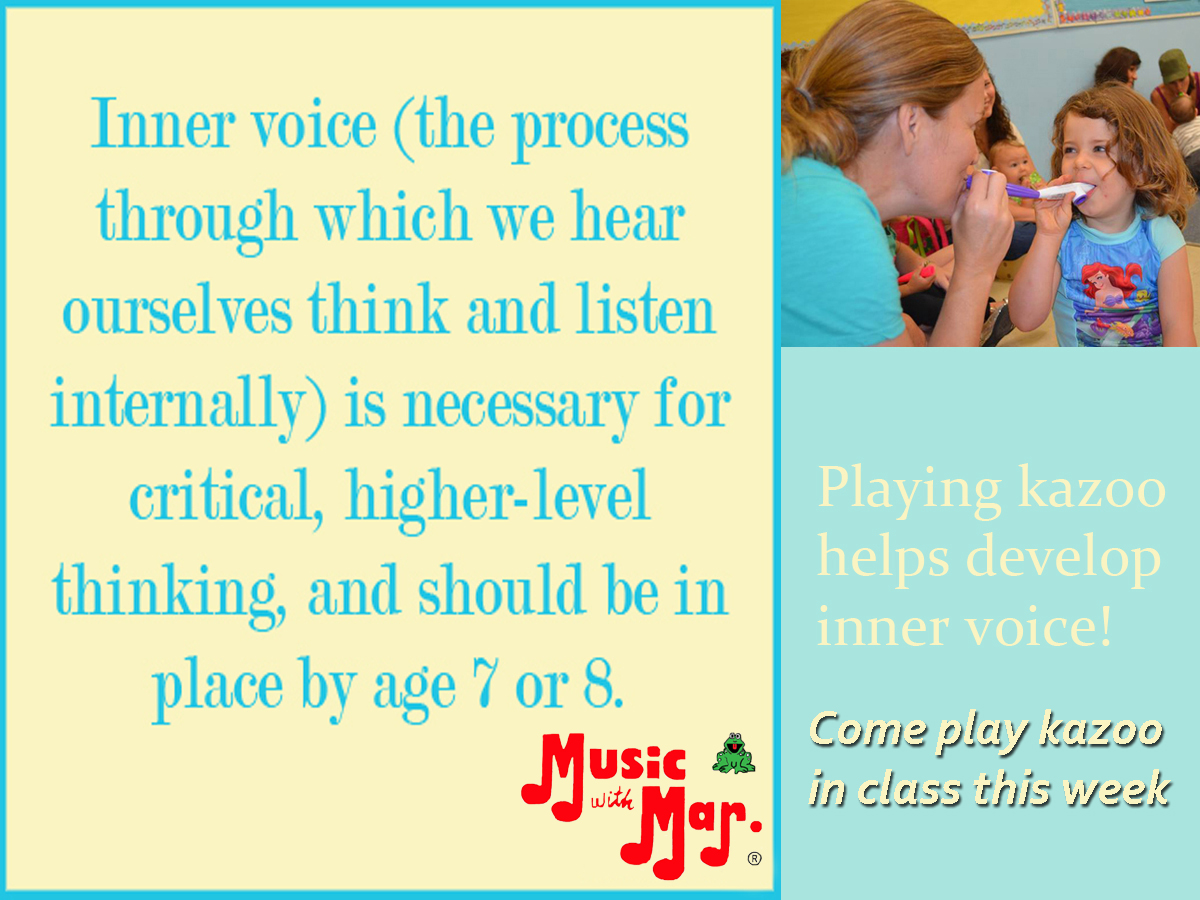Put a kazoo in a child’s hand, even infant/toddler's, and they will explore. At the same time, their brain will be reaping tremendous benefits. In this blog, we will explore those benefits.
Below is a definition of a kazoo. Notice how they refer to the kazoo player as a musician. This is because, as with any instrument, it can be played with great skill or just for fun.
A kazoo is a wind instrument unlike conventional brass and woodwind instruments. It is typically an open-ended, short tube, which is tapered at one end. Near the wider, front of the instrument there is another opening on top called the turret section, which houses a thin, resonating membrane. It has no valves or buttons typical of other instruments. In addition to these structural differences, a kazoo is also played different than conventional instruments. In brass instruments, the buzzing sound of the lips is amplified to produce the notes. In wood-wind instruments, musical notes are created by the vibration of the reed. The kazoo relies on the voice of the musician to produce the sound. When a musician plays a kazoo, he hums into it and that causes the thin film to vibrate. This vibration changes with the sound of the voice giving it the buzzing quality, which is unique to the kazoo. Read more: The Story Behind the Kazoo

Energize the Brain
When you blow into a kazoo, the vibrations reverberate in the bone structure of your head. This energizes the brain. It feels good, which is why so many kazoo players are often smiling while playing. Here are the major benefits of the kazoo:
- Helps to develop inner voice (the process through which we hear ourselves think and listen internally). This is because you have to think about what you are going to play before you actually do it;
- Children without inner voice need to hear something to understand it. (The child who comes to your desk to ask you, “Is this what this says?”)
- Inner voice should be in place by 7 or 8 and is necessary for higher-level thinking.
- Provides a way to have fun. Within moments, anyone can be a kazoo player. Get a group of people together with kazoos and you get the feeling of playing together as in a band;
- Enhances language development. Supporting the air flow out of the kazoo helps children who have difficulty with this skill when speaking;
- Develops confidence and an interest in learning an instrument. When a child plays the kazoo successfully, they get the message they can try something else and be successful as well;
- Vibrates the bone structure in the face/head and stimulates the vestibular system;
- Allows for self-expression and self-esteem;
- Encourages children to want to keep music a part of their lives because it is fun and something they enjoy.

As with any instrument, when purchasing a kazoo, be sure it is good quality. The cheap, toy kazoos sold by novelty stores are not going to have the same benefits as a well built one. Kazoobie is a great company to work with and they produce a solid product. Their pricing and customer service is good as well.
I’d like to close this blog with a heartwarming story. Kazoos are a big part of Music with Mar. classes. Parents are often skeptical at first when I hand their 11 month old the instrument. Then they see the immediate results and smile. This is a story a mom told me: “It was my grandfather’s 75th birthday and we were about to do the cake when my 18 month old asked everyone to wait. He went to his room, got his kazoo, came back and played ‘Happy Birthday’. There wasn’t a dry eye around that table!” What a wonderful story and what a wonderful memory. Start creating your own kazoo memories.
All you have to do is hum!
Tags: kazoo , hum , music , instrument , brain stimulation
« Back



